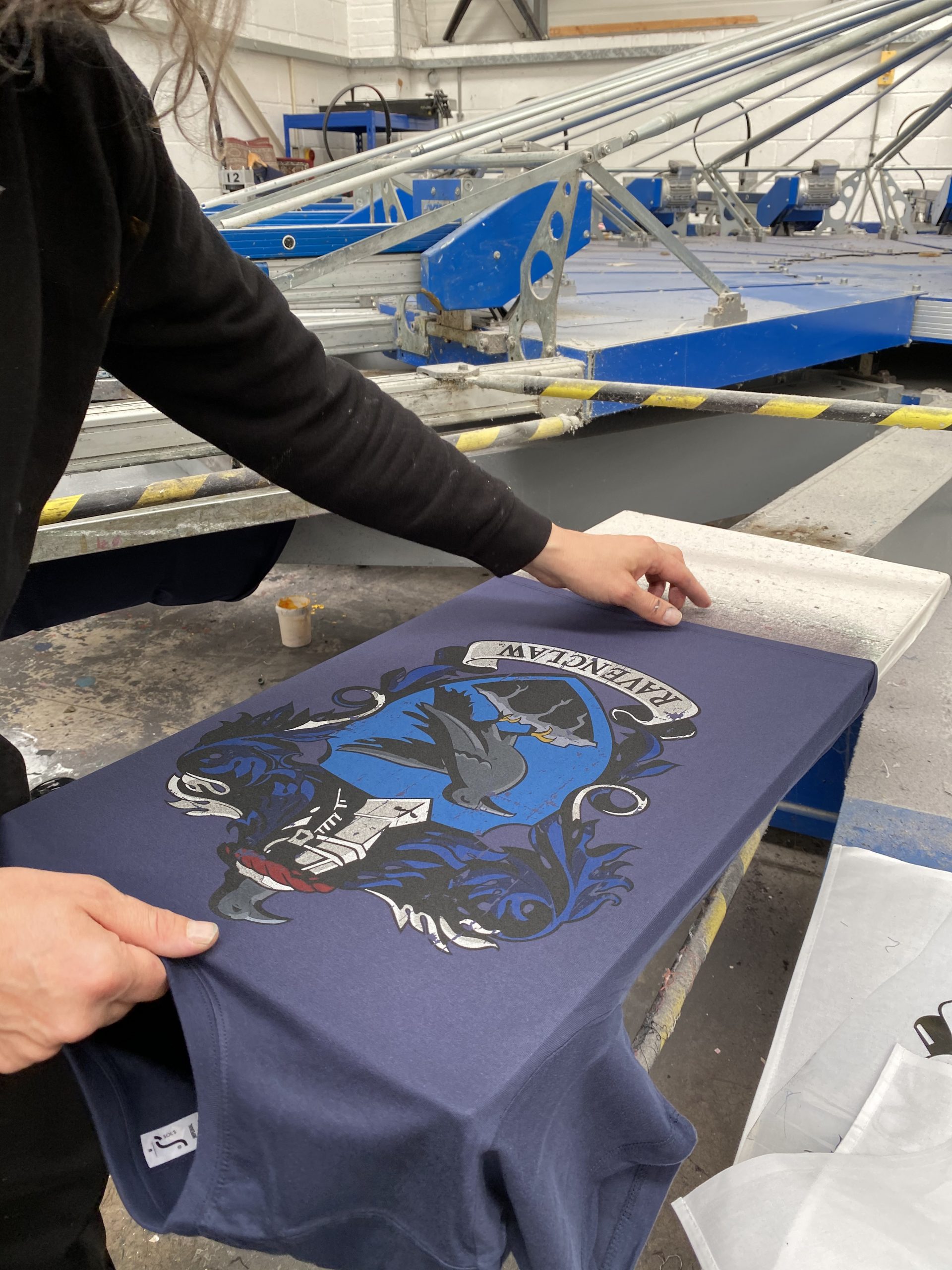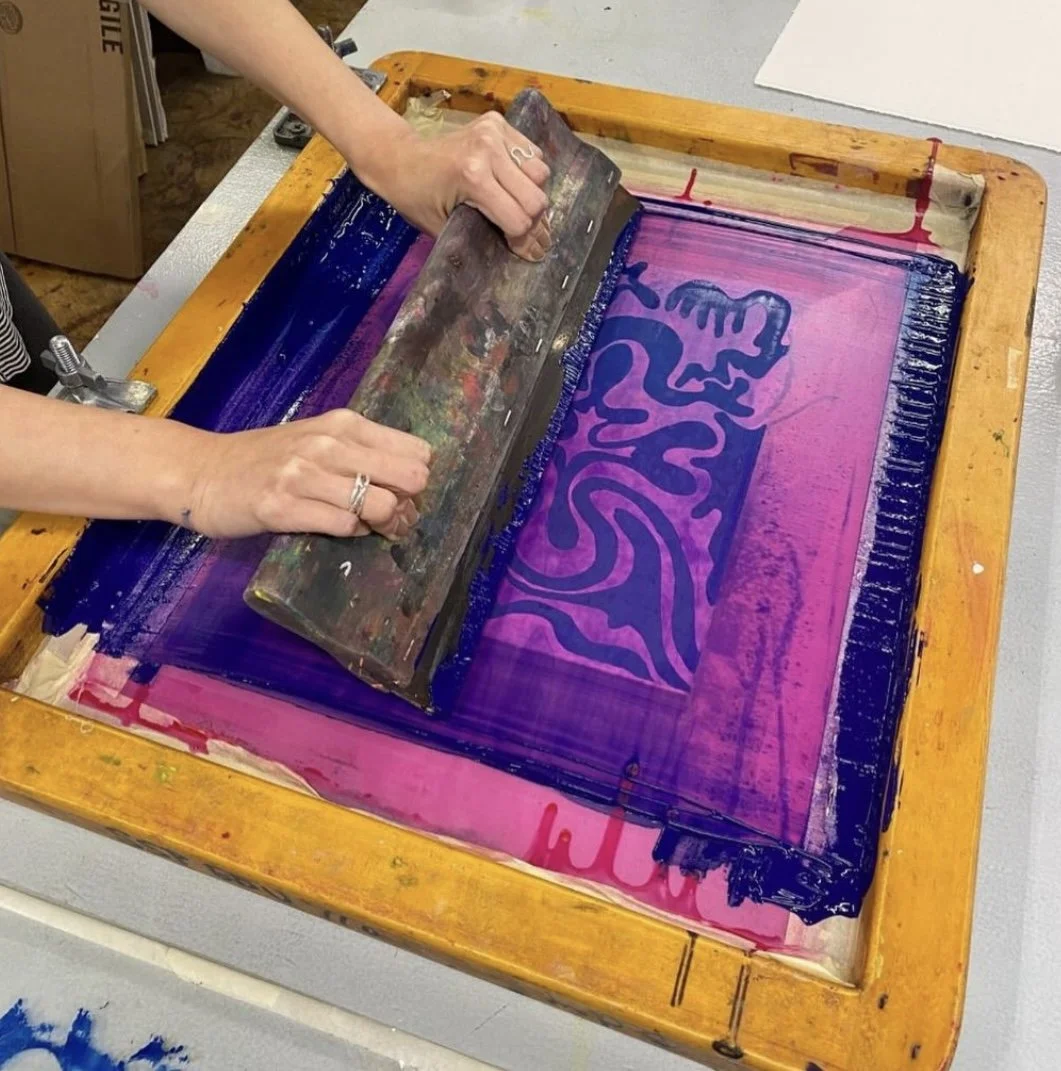ChatGPT said: Finding the best deals with 10:9 Design near me: insider guide
Discover the Numerous Kinds Of Screen Printing Techniques for Your Next Task
Screen printing uses a diverse series of techniques that can boost any kind of innovative job. From conventional methods like serigraphy to modern-day innovations such as direct-to-garment printing, each strategy has its special benefits. Specialty alternatives, consisting of metallic and environment-friendly inks, introduce also extra opportunities. Comprehending these techniques can substantially affect the final end result. The obstacle exists in choosing the most appropriate method for specific demands and preferred results. What variables should one consider?

The Essentials of Screen Printing
Screen printing might appear complex, it is basically a simple process that includes transferring ink with a mesh screen onto various surface areas. The method starts with the development of a stencil, which defines the style to be printed. This stencil is affixed to a mesh screen, usually made from polyester or nylon. As soon as the pattern is in location, ink is applied to the screen and pushed through the mesh making use of a squeegee, resulting in the desired pattern being printed on the underlying product.
Screen printing can be executed on a vast array of substratums, consisting of paper, material, and plastic, making it a versatile selection for different jobs. The process enables elaborate designs and vivid shades, making it prominent in markets such as art, advertising and marketing, and style. Recognizing these essentials outfits people with the foundational knowledge needed to explore more innovative strategies in screen printing.
Traditional Screen Printing Techniques
Typical screen printing techniques have actually been used for centuries, maintaining the workmanship and creativity of this technique. This technique uses a mesh screen to transfer ink onto a substrate, such as fabric or paper, enabling vibrant and durable designs. The procedure begins with producing a pattern, which blocks specific locations of the screen to control where the ink will certainly be applied.
One preferred strategy is serigraphy, usually used for creative prints and limited editions. One more is using water-based inks, which are environment-friendly and give a soft feeling on fabrics - 10:9 Design LLC Company. Additionally, typical methods can consist of hands-on printing, where artisans use ink with a squeegee, making certain accuracy and focus to information
These methods stay valued in the industry for their tactile quality and the one-of-a-kind structures they create, attracting both developers and consumers that value the heritage of screen printing.
Digital Screen Printing Innovations
As the need for faster manufacturing and personalization in the printing sector has risen, digital screen printing technologies have become a game-changer. This modern technology blends typical screen printing approaches with electronic procedures, permitting for rapid prototyping and detailed styles that were previously hard to accomplish. One substantial advancement is the intro of direct-to-garment (DTG) printing, which helps with high-grade, full-color prints on numerous textiles without the need for displays. In addition, advancements in ink formulations have resulted in eco-friendly options that preserve vivid colors while reducing environmental impact. Using automated systems additionally enhances manufacturing, lowering labor expenses and boosting accuracy. These developments not just provide to small batch orders and tailored designs however additionally enable quicker turnaround times, making them ideal for services concentrated on meeting client demands in a hectic market. Digital screen printing, consequently, stands for a vital development in the domain of printing techniques.
Specialty Screen Printing Methods
Exploring specialty screen printing methods exposes a varied selection of methods that press the limits of creativity and performance in the printing sector. Among these, glow-in-the-dark inks supply an unique visual impact, making designs come active in low-light problems. Metal inks, known for their glittering finish, include a touch of deluxe to published materials. One more ingenious technique is discharge printing, which eliminates color from the textile instead of adding ink, causing a soft, classic feel. High-density printing develops a raised structure on the surface area, boosting tactile interaction. In addition, water-based inks are gaining popularity for their vibrant colors and decreased ecological effect. Each of these specialized strategies satisfies particular design demands, allowing artists and brands to create standout items that resonate with their target markets. By leveraging these techniques, organizations can boost their screen printing projects to brand-new heights, guaranteeing memorable impacts.
Eco-Friendly Screen Printing Options
Environment-friendly screen printing choices are gaining grip as the market moves towards sustainability. Sustainable ink choices and using naturally degradable materials are key parts in decreasing the ecological influence of the printing process. By embracing these practices, screen printers can add to an extra sustainable future while keeping high-quality outcomes.
Sustainable Ink Choices

Biodegradable Materials Use
As the screen printing market develops, the unification of naturally degradable products is coming to be significantly important for environmentally mindful methods. Developers and suppliers are currently discovering inks and substratums made from natural, renewable resources that break down extra efficiently than conventional equivalents. These eco-friendly options minimize plastic waste and minimize ecological effect, lining up with the expanding need for lasting products.
Common examples consist of water-based inks and natural cotton materials, both of which reduce unsafe chemicals and advertise eco-friendliness. Brand names that embrace these materials usually boost their market allure, bring in customers who prioritize sustainability. As recognition of ecological issues continues to climb, the change towards naturally degradable materials in screen printing is likely to obtain energy, promoting a greener market requirement.
Choosing the Right Strategy for Your Job
How can one identify one of the most appropriate screen printing technique for a certain job? The decision depends upon several variables, including the material to be published on, the complexity of the design, and the wanted production quantity - 10:9 Design Texas. Direct-to-garment printing is optimal for complex designs with countless shades, while standard screen printing succeeds for bigger runs of simpler graphics.
Furthermore, factor to consider of the end-use of the printed product is important. For outside applications, strategies that supply sturdiness and climate resistance, such as plastisol ink, might be preferred. On the other hand, environmentally-conscious jobs might take advantage of water-based inks or biodegradable materials.
Ultimately, comprehending the task's unique demands permits for an educated option, making certain both visual allure more info and useful longevity. By evaluating design complexity, material compatibility, and production scale, one can efficiently choose the most appropriate screen printing technique to satisfy their job's objectives.
Often Asked Concerns
What Is the History of Screen Printing?
Screen printing came from ancient China around 1000 ADVERTISEMENT, advancing via Japan and Europe. By the 20th century, it ended up being prominent in commercial art and fashion, revolutionizing how layouts were generated and dispersed around the world.

How Do I Prepare Artwork for Screen Printing?
To prepare art work for screen printing, one should assure high resolution, utilize an ideal shade setting, develop different layers for each and every shade, and transform message to lays out, assuring compatibility with the printing procedure and wanted end result.
What Products Are Ideal for Screen Printing?
The most effective materials for screen printing include top notch inks, long lasting displays, and ideal substratums like cotton, polyester, or blends. In addition, making use of ideal solution and mops can boost the printing procedure and results.
Can I Evaluate Publish in the house?
Yes, screen printing in your home is possible. With the right products, configuration, and methods, individuals can create high-quality prints. Careful consideration of work space and tools is important for effective outcomes.
What Are Common Mistakes in Screen Printing?
Common mistakes in screen printing include improper exposure times, inadequate ink consistency, misalignment of screens, not enough cleansing of materials, and disregarding to examine prints. These mistakes can endanger the top quality and accuracy of the end product.
Screen printing might appear complex, it is fundamentally a straightforward process that involves transferring ink via a mesh screen onto various surfaces. As the need for faster manufacturing and modification in the printing sector has surged, digital screen printing advancements have emerged as a game-changer. Exploring specialized screen printing approaches discloses a varied range of methods that push the boundaries of creativity and functionality in the printing industry. The best materials for screen printing include top notch inks, resilient screens, and ideal substrates like cotton, polyester, or blends (10:9 Design Screen Printing Texas). Common blunders in screen printing include improper direct exposure times, inadequate ink uniformity, imbalance of screens, not enough cleaning of products, and overlooking to examine prints